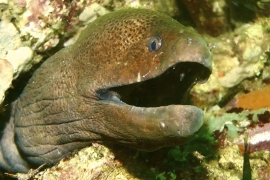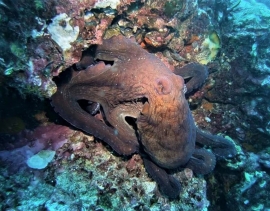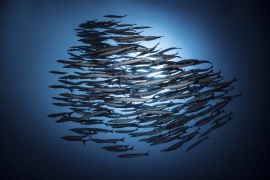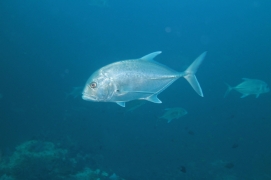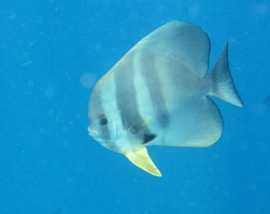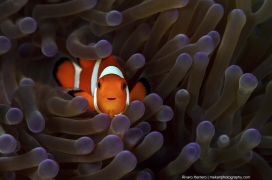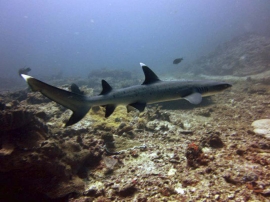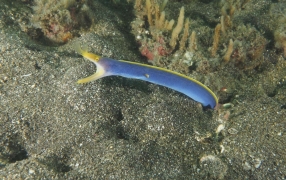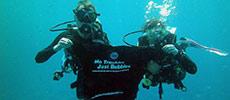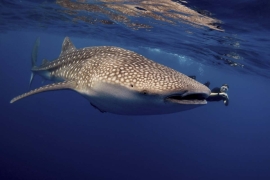
St. John's Liveaboard Diving
Still not visited by many liveaboard boats, and out of range for day-trip diving, St. John's offers among the best diving in the Red Sea. Unlike the crowded wreck diving in the north, St. John's is mainly reefs and in the deep south of the country off the east coast.
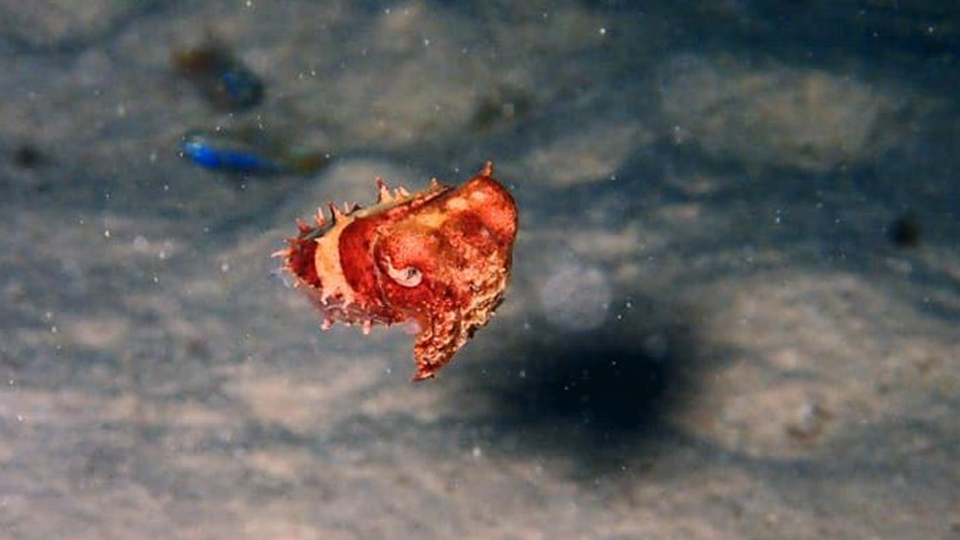
St. John's is the southernmost group of islands in Egypt's Red Sea, and very close to the border with Sudan. The remote location means that no day-trip boats go there, and only a few liveaboards do. Therefore, not only are you likely to be the only boat at each dive site, shy species of marine life aren't scared away by crowds of divers and boat noise. The sea conditions are excellent, with great visibility all year round and slightly warmer sea temperatures than further north.
Most of the dive sites here are 'gotas' or 'habilis.' A gota is a reef system that breaks the surface, and habilis are submerged reefs that have peaks below the surface, and not easy to spot from the boat. These dive sites often have steep or sloping walls in all directions and some are small enough for divers to encircle during one dive. But this depends on currents on the day. Although sometimes currents can be strong at St. John's, in general they are quite mild when compared to the narrow mouths of the Gulfs of Suez and Aqaba further north in The Red Sea.
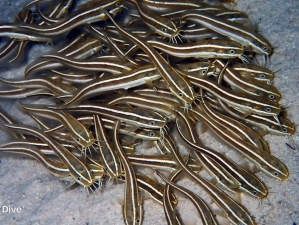 Juvenile catfish - Credit: Aida KaramesicLiveaboard diving safari boats normally include St. John's as part of their 'Deep South' itineraries. Depending on the sea & weather conditions, guests' requests, and recently-spotted marine life, your Egypt liveaboard may spend one or two full days here. There are enough dive sites to spend two full days, without anyone feeling it's repetitive. Slightly further out from the coast to the east are Zabargad Island and Rocky Island, which are sometimes included in the itinerary.
Juvenile catfish - Credit: Aida KaramesicLiveaboard diving safari boats normally include St. John's as part of their 'Deep South' itineraries. Depending on the sea & weather conditions, guests' requests, and recently-spotted marine life, your Egypt liveaboard may spend one or two full days here. There are enough dive sites to spend two full days, without anyone feeling it's repetitive. Slightly further out from the coast to the east are Zabargad Island and Rocky Island, which are sometimes included in the itinerary.
Most St. John's dive sites are quite shallow compared to some other areas of The Red Sea. Average dive depths of 20 metres is normal, and the maximum depth is often not more than 30 metres. However, one of the most-popular dive sites at St. John's (Habili Ali) is more than 65 metres at its maximum, but don't expect to go much deeper than 30 metres. St. John's Caves is extremely popular because it's so photogenic, but is actually very shallow. Dangerous Reef (Gota Gibli) is not Dangerous at all, and is different from most other dive sites in the area. Whichever St. John's diving locations your Red Sea liveaboard safari visits, you are guaranteed to enjoy nice scuba diving in clear water with lots of healthy marine life to see.
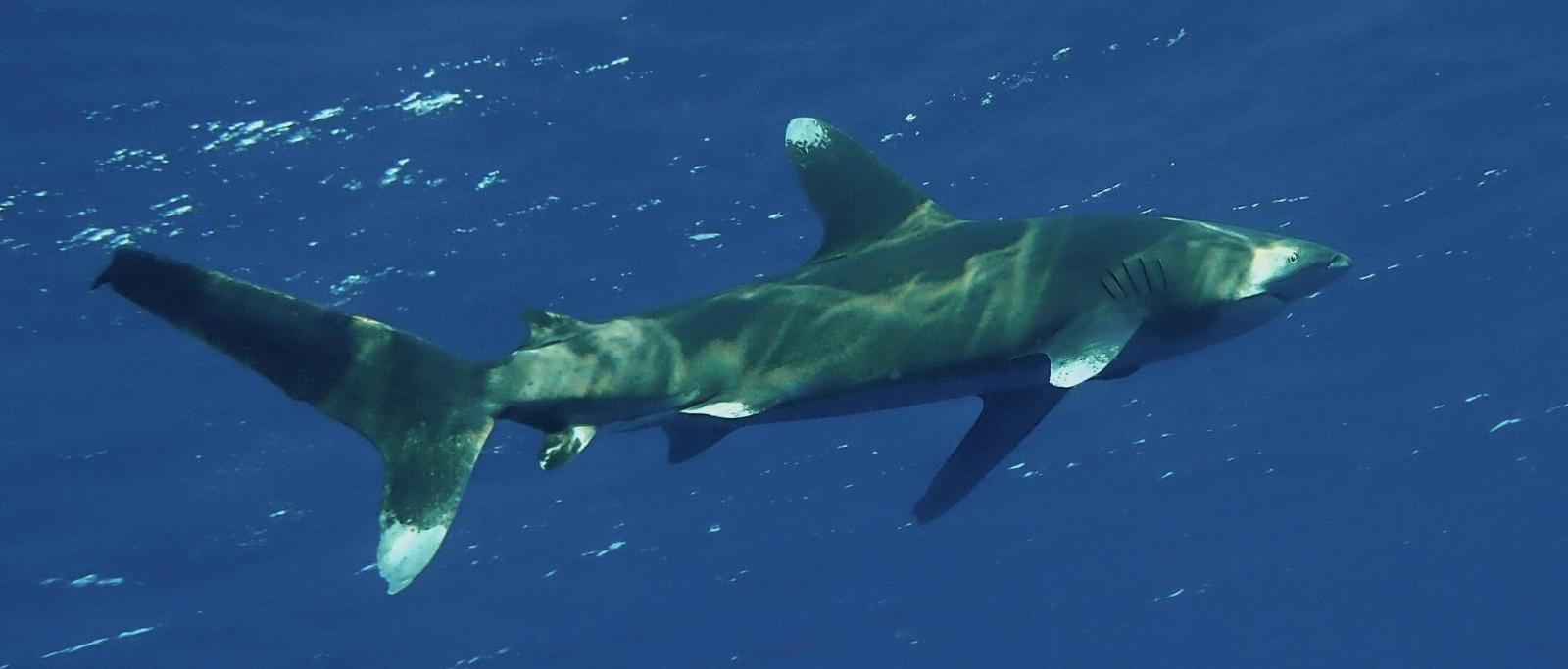 Oceanic Whitetip Shark (Carcharhinus longimanus) - Credit Baptiste Pettavel
Oceanic Whitetip Shark (Carcharhinus longimanus) - Credit Baptiste Pettavel
Dive Sites At St. John's In Southern Egypt's Red Sea
Habili Ali
Habili Ali is 70 metres deep in places and nearly every liveaboard will try to include a dive here if conditions allow. It's in the middle of the archipelago.
Habili Gafar
Habili Gafar has several different spellings of its name, but is an excellent submerged reef in the middle of St. John's. Pelagic sharks visit, but there's plenty more to see if you're not lucky with seeing them.
Gota Kebir
Gota Kebir is on the eastern side of the central area and is a shallow reef that breaks the surface. It has two plateaus, at depths of 15 metres and 30+ metres.
Gota Soraya
Gota Soraya is also quite central and breaks the surface. It's slightly deeper than its sister.
Dangerous Reef
A little bit to the south is Dangerous Reef that bottoms out on sand at a depth of almost 30 metres. This is a horseshoe-shaped reef with lots of life around it.
St. John's Cave
St. John's Cave is a dive site where you can get some great photo opportunities of the lighting and topography, without having to depend on marine life.
Paradise Reef
Paradise Reef is located central north and a popular dive site.
Eden Reef
Eden Reef is nearer to the coast, and has lots of resident reef fish of all sizes.
White Rock
Finally, to the north White Rock is slightly deeper than average and exposed. You may see sharks here on a good day.
Conditions at St. Johns
When to dive at St. Johns
Like most of The Red Sea, you can dive at St. John's all year round with good visibility. But during the northern hemisphere's summer months the weather & sea are warmer. February is coolest, with sea temperatures as low as 22°C.
What type of dive site is St. Johns
There is a great selection of different dive sites at St. John's, nearly of which were made by Mother Nature, but there are also one or two wrecks. Most dives are walls and reefs covered is hard & soft corals.
Where is St. Johns?
St. John's is the southernmost area of Egypt's territory in The Red Sea. It's very close to the border with Sudan. Most islands and dive sites are less than 50 kilometres from the coast.
How to get to St. Johns
Due to the remote location and quantity of great dive sites near each other, it's only really possible to dive at St. John's on a liveaboard diving safari. These depart from Marsa Alam or Port Ghalib. Day-trip boats don't visit St. John's dive sites because there are no local dive centres within range.
Who can dive at St. Johns
Although there are no official minimum limits for your diver certification or experience, nearly everyone who dives at St. John's is already certified to 30 metres and has 50 or more logged dives. But if you're only Open Water, it's normally possible to get certified deeper during the cruise.
What marine life can you see at St. Johns?
This area is far from shipping lanes and from the busy tourist areas. Therefore, plenty of species that are not as common elsewhere can be seen at St. John's. Lucky divers may see Hammerhead sharks or dolphins. Other species of requiem sharks are often seen patrolling the reefs, so keep you eyes open. The healthy reef systems attract and are home to all kinds of wonderful species.
Summary of St. Johns
St. John's is still on the outer edge of tourist areas, and very close to the border with Sudan. The reefs are still in excellent condition and the marine life and visibility are world class. Due to the distances to cover, not many liveaboard boats come here, and there are no day-trip boats. Therefore, if you're lucky enough to dive at St. John's, you will enjoy most dive locations to yourselves, and be surrounded by an abundance of rich marine life.

